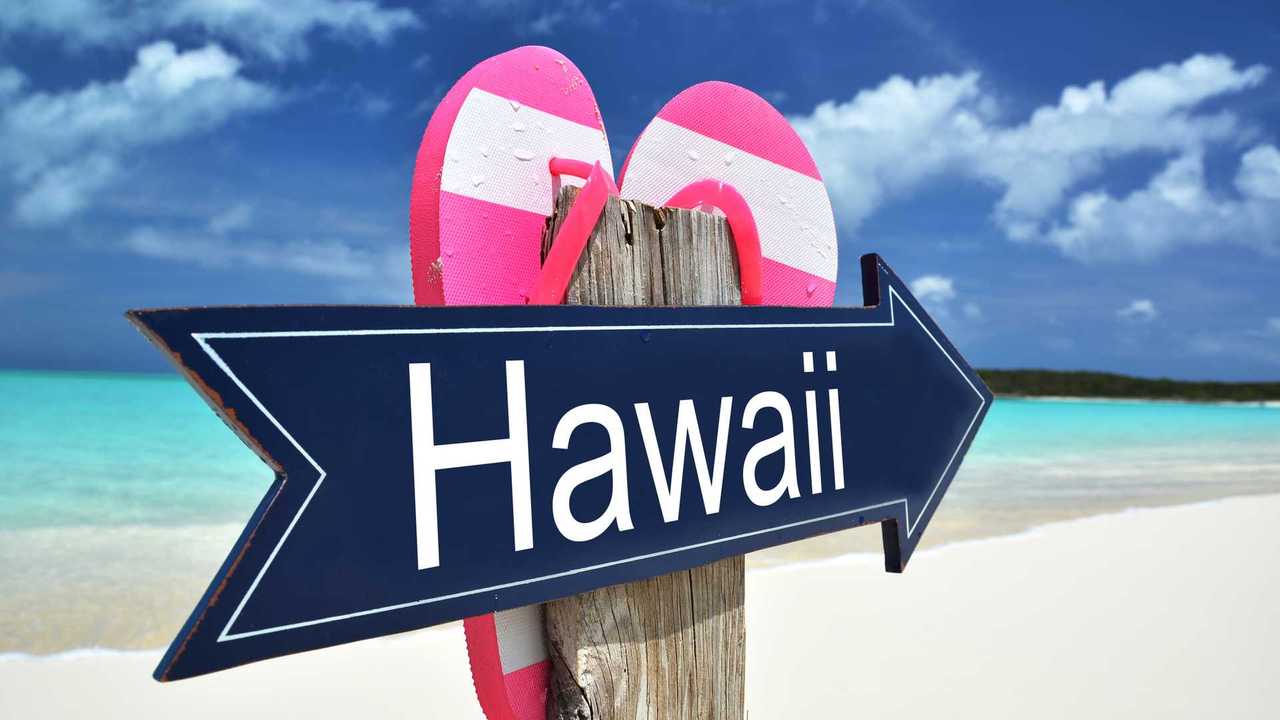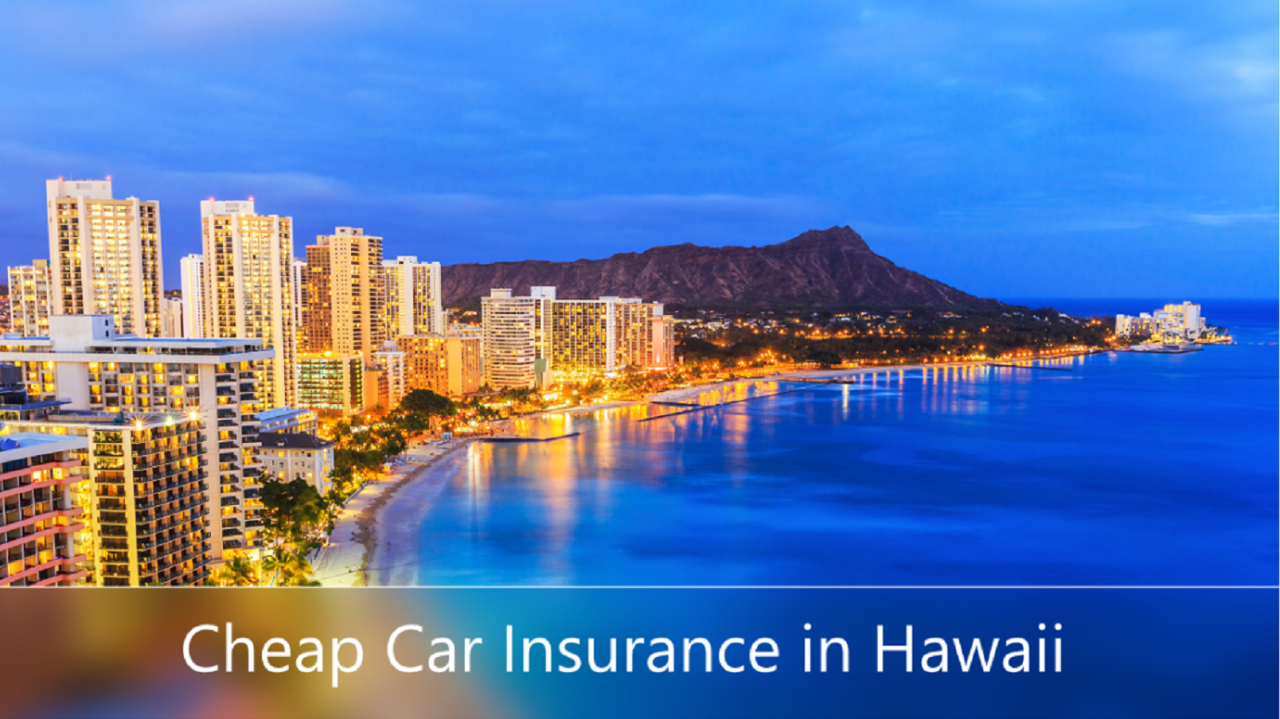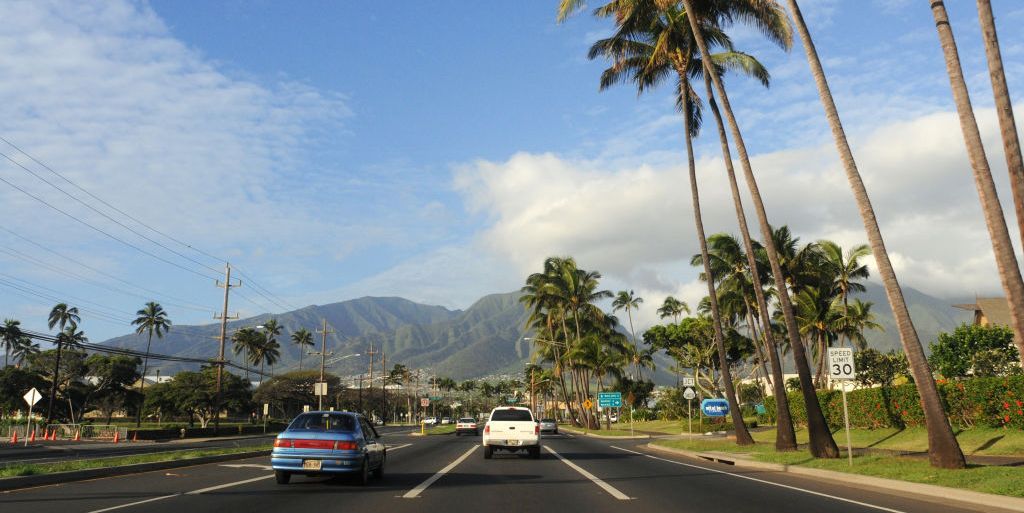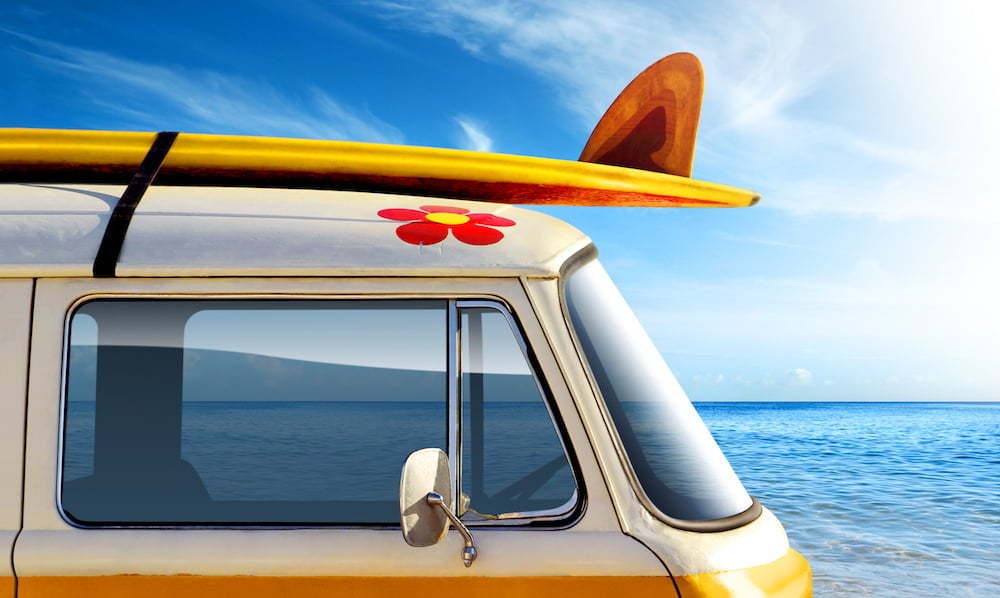Hawaii, a paradise known for its stunning beaches and volcanic landscapes, also presents unique challenges for car insurance. The island state’s high cost of living, geographically isolated environment, and diverse driving conditions contribute to a complex insurance landscape. Understanding the nuances of car insurance in Hawaii is crucial for drivers seeking affordable and comprehensive coverage.
This guide delves into the intricacies of car insurance in Hawaii, exploring factors that influence premiums, navigating the insurance market, and ensuring you have the right coverage for your needs. From understanding mandatory insurance requirements to finding the best rates, this comprehensive resource empowers drivers to make informed decisions and secure the protection they deserve.
Understanding Car Insurance in Hawaii

Hawaii’s unique environment and high cost of living significantly impact car insurance costs. The island state’s isolated location, limited vehicle repair options, and frequent natural disasters contribute to higher insurance premiums. Understanding these factors and the different types of coverage available is crucial for car owners in Hawaii.
Types of Car Insurance Coverage in Hawaii
Car insurance in Hawaii, like most states, offers various coverage options to protect drivers and their vehicles. Understanding these options is essential for choosing the right policy to meet your needs and budget.
- Liability Coverage: This is the most basic type of car insurance and is mandatory in Hawaii. It covers damages to other people’s property and injuries caused by an accident if you are at fault.
- Collision Coverage: This coverage pays for repairs or replacement of your vehicle if it is damaged in an accident, regardless of fault.
- Comprehensive Coverage: This coverage protects your vehicle from damage caused by non-accident events, such as theft, vandalism, natural disasters, or falling objects.
- Uninsured/Underinsured Motorist Coverage: This coverage protects you if you are involved in an accident with a driver who does not have insurance or has insufficient coverage.
Mandatory Insurance Requirements in Hawaii
Hawaii requires all drivers to carry a minimum amount of liability insurance to cover damages and injuries caused to others in an accident. These minimum limits are:
- Bodily Injury Liability: $10,000 per person, $20,000 per accident.
- Property Damage Liability: $10,000 per accident.
It is important to note that these minimum limits may not be sufficient to cover all potential damages or injuries in a serious accident. Drivers are encouraged to consider purchasing higher liability limits to protect themselves financially in case of a significant accident.
Factors Affecting Car Insurance Premiums
In Hawaii, car insurance premiums are influenced by a variety of factors, including your driving history, age, gender, the type of vehicle you drive, and even your credit score. Understanding these factors can help you make informed decisions about your car insurance coverage and potentially save money on your premiums.
Driving History
Your driving history is one of the most significant factors determining your car insurance premium. A clean driving record with no accidents or violations will generally result in lower premiums. Conversely, a history of accidents, speeding tickets, or DUI convictions can significantly increase your premium. Insurance companies consider this information to assess your risk as a driver.
Age
Generally, younger drivers pay higher premiums than older drivers. This is because younger drivers are statistically more likely to be involved in accidents. As drivers gain experience and age, their premiums tend to decrease.
Gender
In some states, insurance companies may consider gender when calculating premiums. However, this practice is becoming increasingly uncommon due to legal challenges and changing societal views.
Vehicle Type
The type of vehicle you drive also plays a role in determining your car insurance premium. Luxury cars, sports cars, and vehicles with high repair costs generally have higher insurance premiums than more affordable and common vehicles.
Credit Score
In many states, including Hawaii, insurance companies may use your credit score to determine your car insurance premium. The rationale is that individuals with good credit scores are statistically more likely to be responsible drivers. However, this practice has been criticized for its potential to unfairly disadvantage individuals with poor credit histories.
Deductibles and Coverage Limits
Deductibles and coverage limits are two important factors that influence your car insurance premium.
A deductible is the amount of money you pay out of pocket before your insurance coverage kicks in.
A higher deductible typically means a lower premium, as you are assuming more financial responsibility in the event of an accident.
Coverage limits refer to the maximum amount your insurance company will pay for covered losses.
Higher coverage limits generally result in higher premiums. You need to carefully consider your financial situation and risk tolerance when choosing your deductible and coverage limits.
Comparison of Insurance Rates
Insurance rates vary significantly among different insurance companies in Hawaii. It is essential to compare quotes from multiple insurers to find the best deal for your needs. Online comparison tools and insurance brokers can simplify this process. Factors like your specific coverage needs, driving history, and vehicle type will influence the rates offered by different companies.
Navigating the Insurance Market
Finding the right car insurance in Hawaii can feel like navigating a maze. With so many insurers offering a variety of coverage options and pricing, it’s essential to have a strategic approach to ensure you get the best deal for your needs.
Obtaining Car Insurance Quotes
The first step in finding the best car insurance rates is to gather quotes from multiple insurers. This allows you to compare prices, coverage options, and overall value.
- Identify Your Needs: Before contacting insurers, determine your specific coverage requirements. Consider factors like your car’s value, driving history, and desired coverage levels.
- Contact Insurers Directly: Reach out to insurance companies directly by phone, email, or visiting their websites. Provide them with your personal and vehicle information to receive personalized quotes.
- Use Online Comparison Tools: Websites like Insurify, Policygenius, and Bankrate offer convenient platforms to compare quotes from multiple insurers simultaneously. Simply enter your details, and the platform will generate a list of potential options.
- Consult an Insurance Broker: Insurance brokers act as intermediaries, connecting you with various insurers and assisting in finding the best policy for your situation. They can leverage their expertise to negotiate rates and provide personalized advice.
Benefits of Online Comparison Tools and Insurance Brokers
Leveraging online comparison tools and insurance brokers offers several advantages when searching for car insurance in Hawaii.
- Time-Saving: Online comparison tools and brokers streamline the quote-gathering process, eliminating the need to contact multiple insurers individually.
- Comprehensive Comparisons: These platforms provide a side-by-side comparison of quotes from various insurers, allowing you to easily identify the best deals.
- Expert Guidance: Insurance brokers offer personalized advice based on your specific needs and can help you navigate complex insurance terms and conditions.
- Negotiation Power: Brokers can leverage their relationships with insurers to negotiate better rates and coverage options on your behalf.
Understanding Policy Terms and Conditions
Once you’ve received quotes and are considering a specific policy, it’s crucial to thoroughly understand the terms and conditions before making a decision.
- Coverage Levels: Ensure the policy covers your desired level of protection, including liability, collision, comprehensive, and uninsured motorist coverage.
- Deductibles: Understand the deductible amount you’ll be responsible for in case of an accident or claim.
- Exclusions: Review the policy’s exclusions, which specify situations where coverage may not apply.
- Premium Payment Options: Choose a payment plan that suits your budget and financial preferences.
Driving Safety and Insurance

In Hawaii, where scenic roads often wind through diverse landscapes, safe driving practices are crucial for both personal well-being and insurance premiums. By adopting defensive driving habits and understanding the impact of traffic violations and accidents on your insurance rates, you can minimize risks and potentially save money on your car insurance.
Impact of Traffic Violations and Accidents
Traffic violations and accidents significantly impact car insurance premiums. Insurance companies consider these events as indicators of higher risk, leading to increased premiums.
- Traffic Violations: Each violation, such as speeding tickets, running red lights, or driving under the influence, can lead to higher premiums. The severity of the violation and the number of violations accumulate, increasing the risk profile.
- Accidents: Accidents, even those with minimal damage, can significantly impact insurance rates. The severity of the accident, the number of accidents, and whether you were at fault are key factors considered by insurance companies.
A single speeding ticket could result in a premium increase of 20% or more, while a DUI conviction could lead to a much larger increase, depending on the insurance company and the specific circumstances.
Discounts for Safe Drivers
Insurance companies recognize and reward safe driving practices with discounts. These discounts can significantly reduce premiums, making safe driving a financially rewarding choice.
- Good Student Discount: This discount is typically available to students who maintain a certain GPA. It demonstrates responsible behavior and a commitment to academic success, often correlated with safe driving habits.
- Defensive Driving Course Completion: Completing a defensive driving course, which teaches safe driving techniques and risk mitigation strategies, often qualifies for a discount. This demonstrates a commitment to improving driving skills and reducing the risk of accidents.
- Multi-Policy Discount: Bundling your car insurance with other insurance policies, such as home or renters insurance, can often lead to significant savings. This indicates a strong customer relationship and a commitment to the insurance company.
Claims and Coverage

Navigating the process of filing a car insurance claim in Hawaii is crucial for drivers to understand, as it ensures a smooth and efficient resolution in the event of an accident. The process can be complex, and the types of coverage available can vary significantly.
Types of Claims
Understanding the different types of claims is essential for navigating the insurance process effectively. The most common types of car insurance claims in Hawaii include collision, comprehensive, and liability claims.
- Collision Claims: These claims apply when your vehicle is damaged due to a collision with another vehicle or an object, regardless of fault. You can file a collision claim even if you were at fault for the accident.
- Comprehensive Claims: Comprehensive coverage protects your vehicle against damages caused by non-collision events, such as theft, vandalism, natural disasters, and animal collisions. These claims are usually processed regardless of fault.
- Liability Claims: These claims are filed when you are at fault for an accident that causes damage to another person’s property or injuries to another person. Liability coverage covers the costs of repairs or medical expenses for the other party involved in the accident.
Insurance Company’s Role in Claims
The insurance company plays a vital role in investigating and resolving claims. After filing a claim, the insurance company will:
- Investigate the Accident: The insurance company will gather information about the accident, including police reports, witness statements, and photographs of the damage. They may also conduct their own investigation to determine the cause of the accident and the extent of the damage.
- Assess the Damage: Once the investigation is complete, the insurance company will assess the damage to your vehicle or the other party’s property. They may use an independent appraiser to determine the cost of repairs or replacement.
- Process the Claim: The insurance company will then process the claim and issue a payment to you or the other party involved in the accident. The payment may cover the cost of repairs, replacement, medical expenses, or other related costs, depending on the type of claim and the coverage you have.
Hawaii-Specific Considerations
Hawaii’s unique geographical location and natural environment present specific challenges for car insurance. Residents face the risk of natural disasters, including hurricanes, earthquakes, and volcanic activity, which can significantly impact vehicle safety and insurance claims. Understanding these unique considerations is crucial for obtaining appropriate coverage and managing potential risks.
Specialized Insurance Coverage
The potential for natural disasters in Hawaii necessitates specialized insurance coverage options.
- Flood Insurance: Hawaii’s coastal locations and susceptibility to heavy rainfall and storm surges make flood insurance essential for protecting vehicles. Flood insurance is typically not included in standard car insurance policies, so it’s crucial to purchase it separately.
- Earthquake Insurance: Hawaii is located in an active seismic zone, making earthquake insurance crucial for protecting vehicles against damage from tremors and aftershocks. This coverage is also typically not included in standard car insurance policies, so it’s vital to explore separate earthquake insurance options.
Impact of Location on Premiums
Hawaii’s island environment and limited road infrastructure can influence car insurance premiums.
- Limited Competition: The limited number of insurance providers operating in Hawaii can result in higher premiums due to reduced competition in the market. This lack of competition may limit options for finding the most affordable rates.
- Higher Risk Factors: Factors like volcanic activity, limited road infrastructure, and higher traffic congestion in certain areas can contribute to increased risk for car accidents, leading to potentially higher insurance premiums.
- Transportation Costs: Hawaii’s dependence on sea and air transportation for goods and services can lead to higher repair costs for vehicles, potentially influencing insurance premiums.
Finding the Right Insurance
Choosing the right car insurance in Hawaii is crucial for safeguarding your financial well-being and ensuring you have adequate coverage in case of an accident. The process involves careful consideration of your individual needs and the diverse options available in the market.
Factors to Consider
When selecting car insurance in Hawaii, a comprehensive checklist can help you make informed decisions. This checklist highlights essential factors to prioritize:
- Coverage Types: Determine the types of coverage you require, including liability, collision, comprehensive, uninsured/underinsured motorist, and personal injury protection (PIP). Consider your driving habits, the value of your vehicle, and your risk tolerance.
- Deductibles: Deductibles are the amounts you pay out of pocket before your insurance kicks in. Higher deductibles typically result in lower premiums, but you’ll have to pay more in the event of a claim. Choose a deductible that balances affordability with your financial capacity to handle unexpected costs.
- Premium Costs: Compare premiums from different insurance companies, taking into account coverage levels, deductibles, and discounts. Consider factors such as your driving history, age, and location.
- Customer Service: Evaluate insurance companies based on their customer service reputation, claims processing efficiency, and accessibility. Look for companies known for their responsiveness and ease of communication.
- Financial Stability: Ensure the insurance company you choose is financially sound and has a strong track record. Check ratings from organizations like AM Best to assess their stability and ability to pay claims.
Negotiating for the Best Rates
Once you’ve identified potential insurance companies, you can leverage negotiation strategies to secure the best possible rates:
- Shop Around: Obtain quotes from multiple insurance companies to compare prices and coverage options. This competitive approach can lead to significant savings.
- Bundle Policies: Consider bundling your car insurance with other insurance products, such as homeowners or renters insurance. Many companies offer discounts for bundling multiple policies.
- Explore Discounts: Inquire about available discounts, including those for safe driving, good student records, and membership in certain organizations.
- Review Your Policy: Regularly review your policy to ensure it still meets your needs and that you’re not paying for unnecessary coverage. Consider adjusting your coverage levels or deductibles based on changes in your circumstances.
Understanding Your Policy
Thoroughly reading and understanding your insurance policy before signing it is essential to avoid surprises and ensure you have the coverage you need. Key aspects to focus on include:
- Coverage Limits: Pay attention to the maximum amounts your insurance company will pay for different types of claims, such as liability, collision, and medical expenses.
- Exclusions: Identify any situations or events not covered by your policy, such as certain types of accidents or damage.
- Conditions: Understand the conditions you must meet to receive coverage, such as notifying your insurer promptly after an accident.
- Renewal Terms: Familiarize yourself with the renewal process, including the timing, premium adjustments, and any changes to coverage.
Insurance Resources
Finding the right car insurance policy in Hawaii can be overwhelming, but it doesn’t have to be. Numerous resources are available to help you navigate the process and make informed decisions.
Reputable Insurance Companies in Hawaii
Several reputable insurance companies operate in Hawaii, offering a range of car insurance plans to suit diverse needs and budgets. These companies are known for their financial stability, customer service, and competitive pricing.
- American Family Insurance: Offers various insurance products, including car insurance, with a strong focus on customer service and personalized solutions.
- Nationwide Insurance: A well-established company known for its comprehensive coverage options and strong financial stability.
- Progressive Insurance: Popular for its innovative online tools and personalized pricing options, making it easy to compare quotes and find the best deal.
- State Farm Insurance: A leading provider of car insurance in the United States, with a strong reputation for customer satisfaction and a wide network of agents in Hawaii.
- Geico: A large national insurance company known for its competitive pricing and convenient online and mobile services.
- Liberty Mutual Insurance: Offers a range of car insurance options, including personalized coverage plans and accident forgiveness programs.
- Allstate Insurance: A well-known insurance provider offering a wide range of car insurance options, including accident forgiveness and discounts for good driving records.
- Farmers Insurance: Known for its personalized insurance plans and strong customer service, with a focus on providing tailored solutions.
Hawaii Department of Insurance
The Hawaii Department of Insurance serves as a valuable resource for consumers seeking information and assistance related to car insurance.
- Contact Information:
- Address: 250 S. King St., Honolulu, HI 96813
- Phone: (808) 586-2780
- Website: https://cca.hawaii.gov/doi/
- Services:
- Consumer Education: Provides information and resources on car insurance, including coverage options, rates, and consumer rights.
- Complaint Resolution: Helps consumers resolve disputes with insurance companies.
- Market Oversight: Regulates the insurance industry in Hawaii to ensure fair and competitive practices.
Online Resources and Tools
Several online resources and tools can help consumers find and compare car insurance options in Hawaii.
- Insurance Comparison Websites: Websites like PolicyGenius, The Zebra, and Insurify allow you to compare quotes from multiple insurance companies simultaneously.
- Consumer Reports: Provides independent ratings and reviews of car insurance companies, helping consumers make informed decisions.
- Hawaii Insurance Agents Association: Connects consumers with local insurance agents who can provide personalized advice and guidance.
Insurance Trends in Hawaii
The car insurance market in Hawaii is dynamic, with several emerging trends impacting premiums and coverage options. Technological advancements are reshaping the landscape, while regulatory changes are anticipated to influence insurance practices. Understanding these trends is crucial for drivers in Hawaii to make informed decisions about their insurance needs.
Impact of Technology
Technological advancements are playing a significant role in shaping the car insurance market in Hawaii. Telematics and driver-assistance systems are transforming the way insurance companies assess risk and determine premiums.
- Telematics: Telematics devices, such as those found in smartphones or dedicated devices, collect data on driving behavior, including speed, braking, and acceleration. Insurance companies use this data to assess individual driving habits and offer discounts to safer drivers. This approach is known as usage-based insurance (UBI).
- Driver-Assistance Systems: Advancements in vehicle technology, such as lane departure warning, automatic emergency braking, and adaptive cruise control, are influencing insurance premiums. These systems are designed to reduce accidents and injuries, which translates to lower claims for insurance companies. Insurance companies may offer discounts to drivers with vehicles equipped with these safety features.
Future Regulatory Changes
The car insurance landscape in Hawaii is likely to undergo further changes in the coming years. Several factors are driving these changes, including the adoption of new technologies and the increasing awareness of consumer rights.
- Data Privacy: The collection and use of telematics data raise concerns about driver privacy. Hawaii lawmakers are likely to introduce regulations to ensure that insurance companies use this data responsibly and protect consumer privacy.
- Price Transparency: Consumers are demanding greater transparency in insurance pricing. Hawaii may implement regulations requiring insurance companies to disclose their pricing methodologies and make it easier for consumers to compare quotes.
- Insurtech Companies: The rise of Insurtech companies, which use technology to disrupt traditional insurance models, is also impacting the car insurance market in Hawaii. These companies offer innovative products and services, such as personalized pricing and on-demand coverage. Hawaii regulators are likely to adapt their rules to accommodate these new entrants.
Illustrative Examples
To further illustrate the concepts discussed, let’s delve into some practical examples. These examples will showcase the application of car insurance in Hawaii, highlighting the benefits of different coverages and the factors that influence premium costs.
Illustrative Examples of Car Insurance Coverages
Understanding the benefits and costs associated with different car insurance coverages can help you make informed decisions. The following table provides an overview of common car insurance coverages, their benefits, and estimated costs in Hawaii.
| Coverage | Benefits | Estimated Cost (Monthly) |
|---|---|---|
| Liability Coverage | Protects you financially if you cause an accident that injures another person or damages their property. | $50-$100 |
| Collision Coverage | Covers damage to your vehicle if you are involved in an accident, regardless of fault. | $50-$150 |
| Comprehensive Coverage | Covers damage to your vehicle from events other than accidents, such as theft, vandalism, or natural disasters. | $30-$80 |
| Uninsured/Underinsured Motorist Coverage | Protects you if you are involved in an accident with a driver who does not have insurance or has insufficient coverage. | $10-$30 |
Factors Influencing Car Insurance Premiums
Car insurance premiums in Hawaii are influenced by various factors. The following infographic visually depicts the key factors that affect premium costs.
Infographic:
[Insert a visual infographic depicting factors influencing car insurance premiums in Hawaii. The infographic should include elements like:
* Driver Demographics: Age, driving history, credit score, gender, marital status
* Vehicle Factors: Vehicle type, make, model, year, value
* Location: Zip code, accident rates, crime rates
* Coverage Options: Liability limits, deductibles, coverage types
* Driving Habits: Mileage, driving history, driving record]
Claims Process Illustration
Navigating the claims process can be overwhelming, but understanding the key steps and required documents can make the process smoother. Here’s a step-by-step illustration of the claims process:
Step 1: Report the Accident
* Immediately report the accident to your insurance company, providing details of the incident, including the date, time, location, and involved parties.
* Required Documents: Police report (if applicable), photographs of the accident scene and damaged vehicles.
Step 2: File a Claim
* Submit a claim form to your insurance company, providing detailed information about the accident and the damages.
* Required Documents: Accident report, police report, vehicle registration, driver’s license, photographs of the damages.
Step 3: Insurance Company Investigation
* Your insurance company will investigate the claim, reviewing the provided documents and potentially conducting an inspection of the damaged vehicle.
Step 4: Settlement Negotiation
* Once the investigation is complete, your insurance company will assess the damages and negotiate a settlement with you.
* Required Documents: Repair estimates from qualified repair shops, documentation of lost wages (if applicable).
Step 5: Payment and Repair
* Upon reaching an agreement, your insurance company will issue payment for the damages, either directly to you or to the repair shop.
* Required Documents: Signed release form, repair invoices.
Conclusive Thoughts

Navigating car insurance in Hawaii requires a strategic approach. By understanding the factors that influence premiums, comparing quotes from multiple insurers, and prioritizing safety on the roads, drivers can find the right coverage at a competitive price. Remember, having the right insurance is not just a legal requirement, it’s a vital investment in your financial security and peace of mind.

